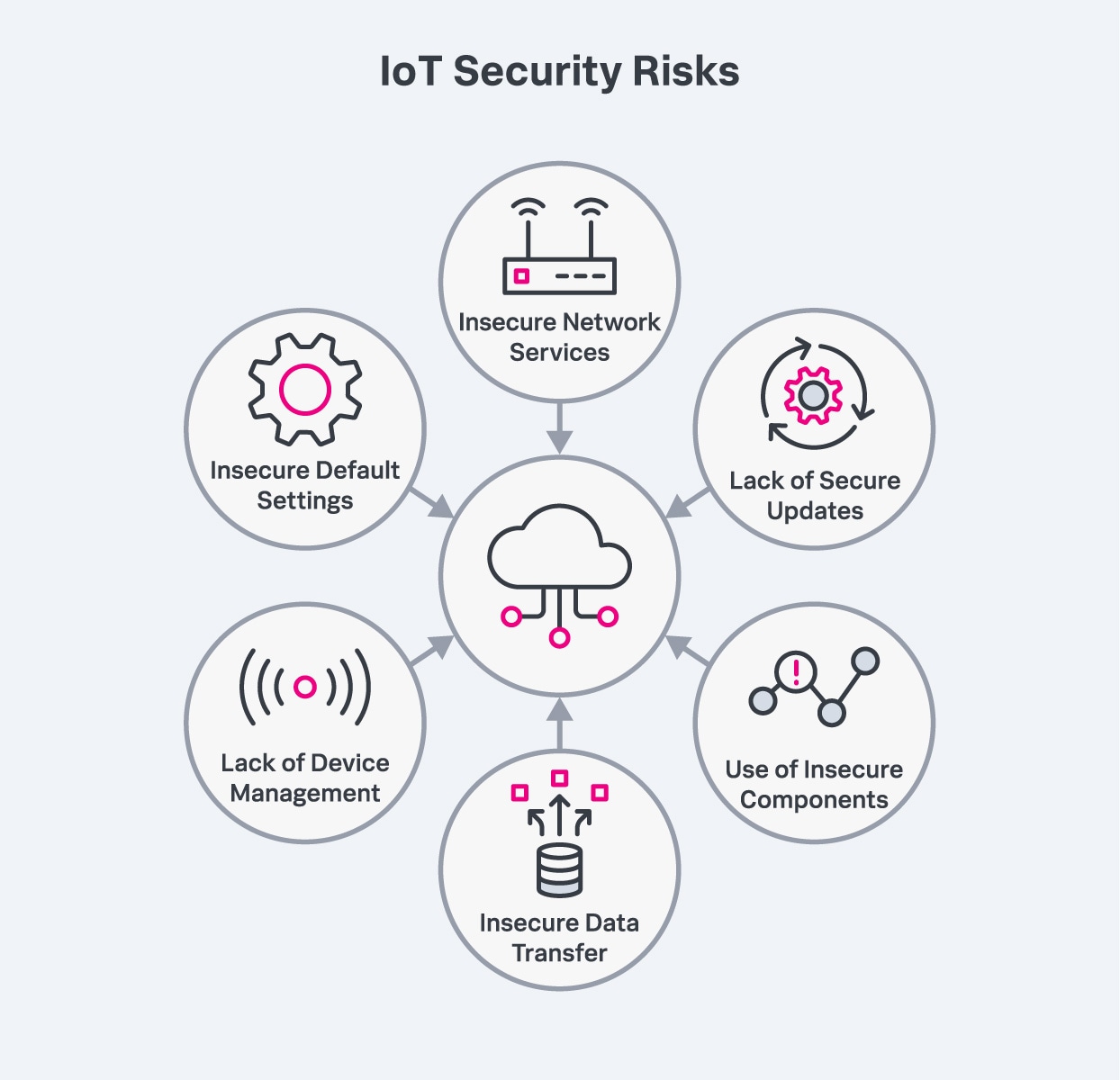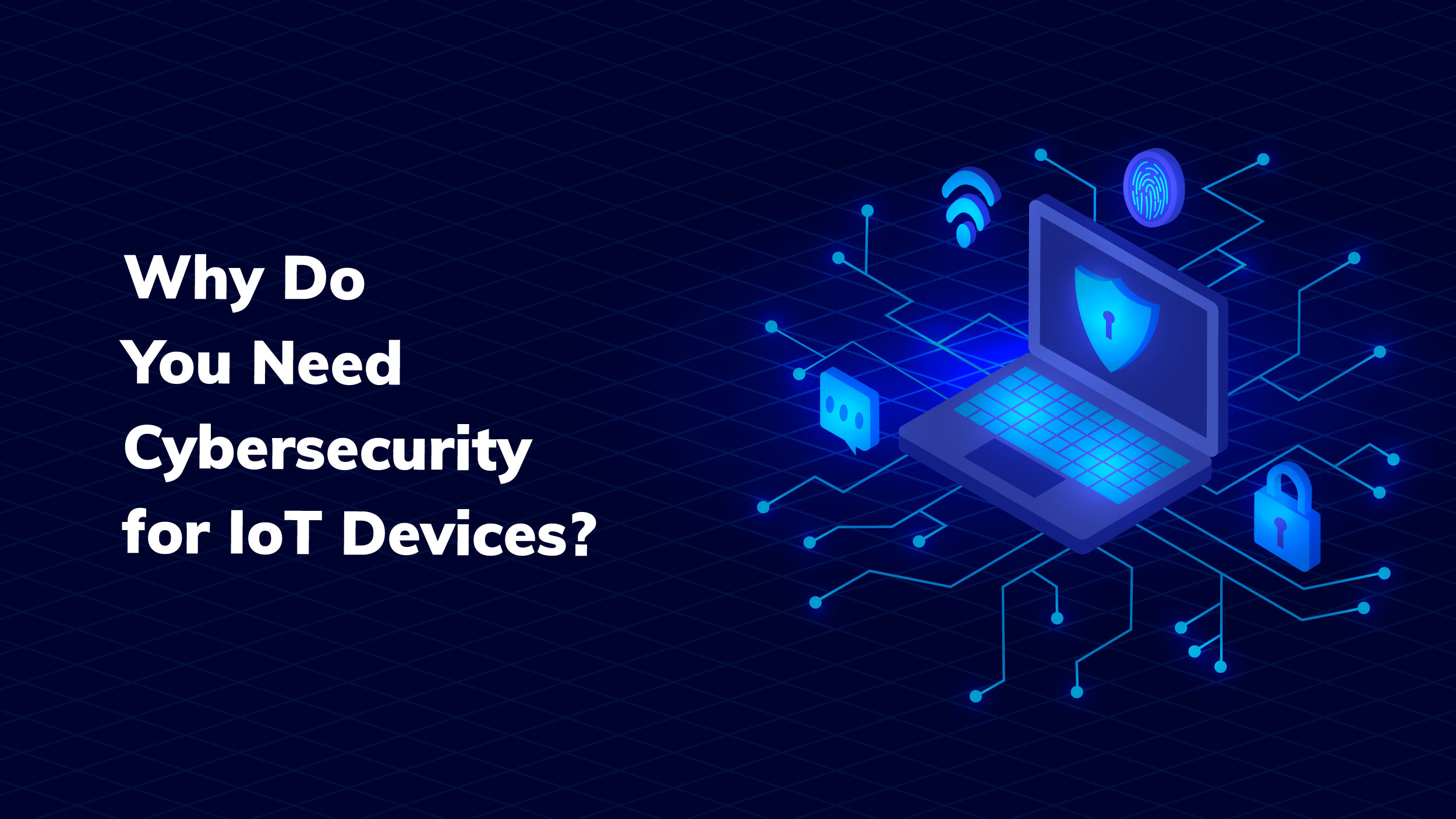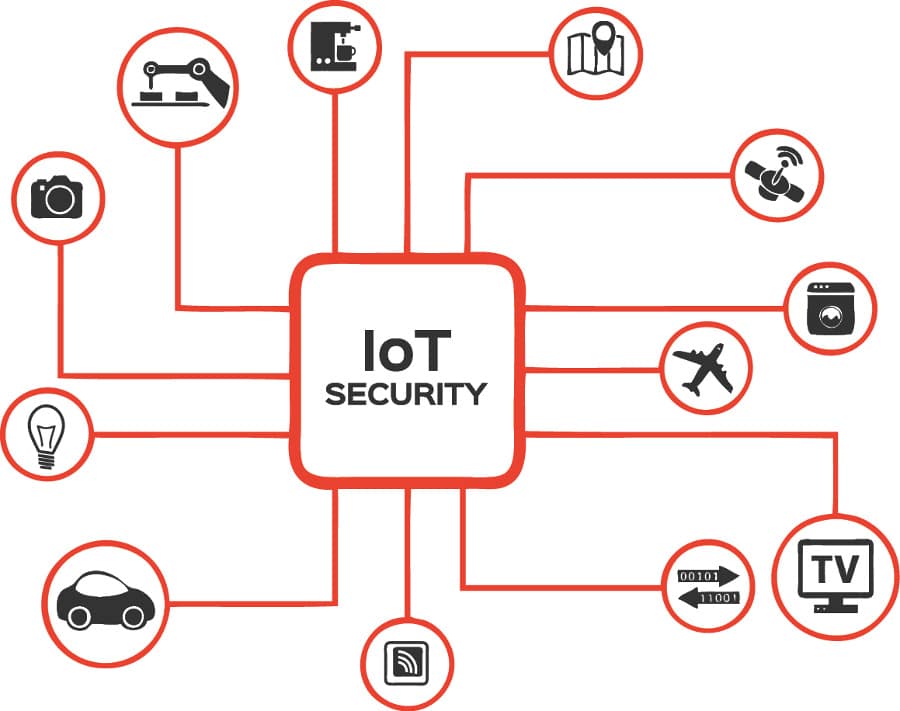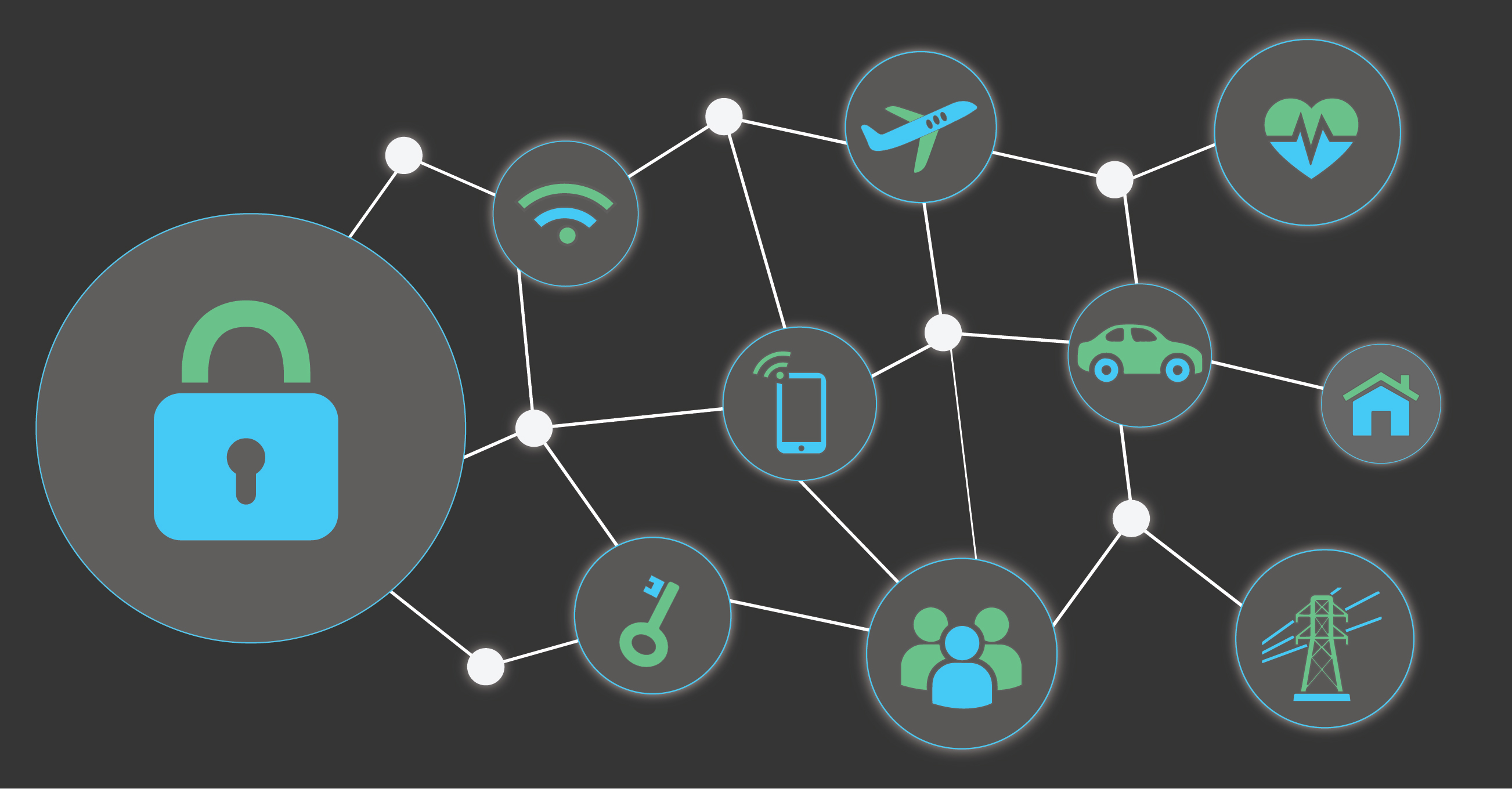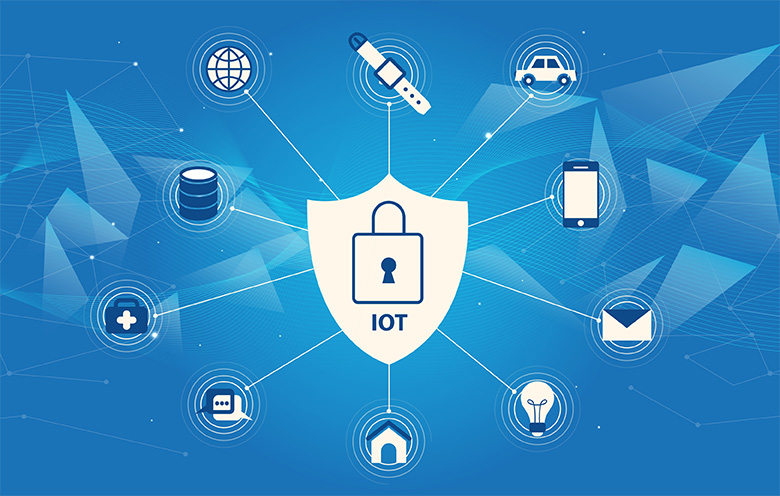Understanding the Risks: Why IoT Devices Need Cybersecurity
The increasing number of connected devices in the Internet of Things (IoT) has created a vast attack surface for cyber threats. As the IoT continues to grow, with estimates suggesting that there will be over 41 billion connected devices by 2025, the need for robust cybersecurity measures has become more pressing than ever. Cybersecurity for IoT devices is no longer a luxury, but a necessity to prevent devastating consequences.
The rise of IoT-based attacks has been alarming, with hackers exploiting vulnerabilities in connected devices to launch massive distributed denial-of-service (DDoS) attacks, steal sensitive data, and even compromise critical infrastructure. The Mirai botnet attack in 2016, which used compromised IoT devices to launch a massive DDoS attack, is a stark reminder of the potential consequences of inadequate cybersecurity.
The potential consequences of a security breach in IoT devices are far-reaching and can have significant impacts on individuals, businesses, and society as a whole. For instance, a breach in a smart home security system can compromise the safety and security of occupants, while a breach in an industrial control system can have catastrophic consequences for critical infrastructure.
Furthermore, the lack of standardization and regulation in the IoT industry has created a Wild West scenario, where manufacturers are often more focused on getting products to market quickly rather than ensuring their security. This has resulted in a plethora of insecure devices being connected to the internet, creating a fertile ground for hackers to exploit.
Therefore, it is essential to prioritize cybersecurity for IoT devices to prevent these risks and ensure the safe and secure operation of connected devices. By understanding the risks and taking proactive measures to secure IoT devices, individuals and organizations can protect themselves from the devastating consequences of a security breach.
How to Protect Your IoT Devices from Cyber Threats
Protecting IoT devices from cyber threats requires a multi-layered approach that involves several essential steps. One of the most critical steps is to change the default passwords of IoT devices, as these passwords are often easily guessable and can be exploited by hackers. For example, the August Smart Lock, a popular IoT device, comes with a default password that should be changed immediately after installation.
Another crucial step is to keep the software of IoT devices up-to-date. Regular software updates often include security patches that fix vulnerabilities and prevent exploitation by hackers. For instance, Philips Hue bulbs, a popular IoT device, receive regular software updates that improve their security and functionality.
Using encryption is also vital for protecting IoT devices from cyber threats. Encryption ensures that data transmitted between IoT devices and the cloud or other devices is secure and cannot be intercepted by hackers. Many IoT devices, such as Amazon Echo and Google Home, use encryption to secure data transmission.
Additionally, it is essential to use a secure network protocol, such as HTTPS, to communicate with IoT devices. This ensures that data transmitted between the device and the cloud or other devices is secure and cannot be intercepted by hackers.
Furthermore, it is recommended to use a virtual private network (VPN) to secure IoT devices. A VPN creates a secure and encrypted connection between the device and the internet, preventing hackers from intercepting data transmission.
By following these essential steps, individuals and organizations can protect their IoT devices from cyber threats and ensure the security of their data. Cybersecurity for IoT devices is a critical aspect of maintaining the security and integrity of connected devices, and it requires a proactive and multi-layered approach.
The Importance of Network Segmentation for IoT Security
Network segmentation is a critical aspect of cybersecurity for IoT devices, as it helps to prevent the spread of malware and unauthorized access to IoT devices. By segmenting the network, IoT devices can be isolated from other devices and systems, reducing the attack surface and preventing lateral movement in case of a breach.
To set up a separate network for IoT devices, a router like the Netgear Nighthawk R7000 can be used. This router allows for the creation of a guest network, which can be used to isolate IoT devices from other devices on the network. Additionally, the router’s built-in firewall can be configured to block incoming and outgoing traffic to and from the IoT network, further enhancing security.
Another benefit of network segmentation is that it allows for more granular control over IoT devices. By isolating IoT devices on a separate network, administrators can apply specific security policies and access controls to these devices, ensuring that they are properly secured and monitored.
Furthermore, network segmentation can also help to improve the overall performance of the network. By isolating IoT devices on a separate network, the main network can be protected from the potential performance impacts of IoT devices, such as increased latency and packet loss.
In addition to network segmentation, it is also important to implement other security measures, such as firewalls, intrusion detection and prevention systems, and encryption. These measures can help to further enhance the security of IoT devices and prevent unauthorized access.
By implementing network segmentation and other security measures, organizations can help to ensure the security and integrity of their IoT devices, and prevent the types of breaches that can have devastating consequences. Cybersecurity for IoT devices is a critical aspect of maintaining the security and integrity of connected devices, and it requires a proactive and multi-layered approach.
IoT Device Security: A Deep Dive into Encryption and Authentication
Encryption and authentication are two critical components of cybersecurity for IoT devices. Encryption ensures that data transmitted between IoT devices and the cloud or other devices is secure and cannot be intercepted by hackers. Authentication, on the other hand, ensures that only authorized devices and users can access IoT devices and their data.
One of the most widely used encryption methods for IoT devices is SSL/TLS (Secure Sockets Layer/Transport Layer Security). SSL/TLS is a cryptographic protocol that provides end-to-end encryption for data transmitted between IoT devices and the cloud or other devices. For example, the Amazon Echo uses SSL/TLS to encrypt data transmitted between the device and the cloud.
Another important aspect of IoT device security is authentication. Authentication protocols like OAuth (Open Authorization) and OpenID Connect provide secure authentication for IoT devices. OAuth, for example, allows users to grant third-party applications limited access to their IoT devices without sharing their passwords. Google Home, for instance, uses OAuth to authenticate users and grant access to their devices.
In addition to encryption and authentication, secure key management is also essential for IoT device security. Secure key management involves generating, distributing, and managing cryptographic keys used for encryption and authentication. For example, the IBM Watson IoT Platform provides secure key management for IoT devices, ensuring that cryptographic keys are generated, distributed, and managed securely.
Furthermore, secure communication protocols like CoAP (Constrained Application Protocol) and MQTT (Message Queuing Telemetry Transport) are also important for IoT device security. These protocols provide secure communication between IoT devices and the cloud or other devices, ensuring that data is transmitted securely and efficiently.
By implementing encryption, authentication, secure key management, and secure communication protocols, IoT device manufacturers and developers can ensure the security and integrity of their devices. Cybersecurity for IoT devices is a critical aspect of maintaining the security and integrity of connected devices, and it requires a proactive and multi-layered approach.
Real-World Examples of IoT Security Breaches and Their Consequences
The Mirai botnet attack in 2016 is a notable example of an IoT security breach. The attack involved a malware that infected millions of IoT devices, including cameras, routers, and digital video recorders. The infected devices were then used to launch a massive distributed denial-of-service (DDoS) attack on several major websites, including Twitter, Netflix, and Amazon.
The consequences of the Mirai botnet attack were severe. The attack caused widespread disruption to online services, and it highlighted the vulnerability of IoT devices to cyber attacks. The attack also led to a significant increase in awareness about the importance of cybersecurity for IoT devices.
Another notable example of an IoT security breach is the Dyn DNS DDoS attack in 2016. The attack involved a malware that infected IoT devices, including cameras and routers, and used them to launch a massive DDoS attack on Dyn’s DNS servers. The attack caused widespread disruption to online services, including Twitter, Netflix, and Amazon.
The consequences of the Dyn DNS DDoS attack were severe. The attack caused significant disruption to online services, and it highlighted the vulnerability of IoT devices to cyber attacks. The attack also led to a significant increase in awareness about the importance of cybersecurity for IoT devices.
These examples highlight the importance of proactive security measures to prevent IoT security breaches. Cybersecurity for IoT devices is a critical aspect of maintaining the security and integrity of connected devices, and it requires a proactive and multi-layered approach.
By learning from these examples, organizations can take steps to prevent similar breaches from occurring. This includes implementing robust security measures, such as encryption, authentication, and secure key management, as well as conducting regular security audits and penetration testing.
Additionally, organizations can also take steps to mitigate the consequences of an IoT security breach. This includes having an incident response plan in place, as well as implementing measures to detect and respond to security incidents in real-time.
Best Practices for Secure IoT Device Development and Deployment
Designing and deploying secure IoT devices requires a comprehensive approach that involves several best practices. One of the most critical best practices is to implement secure coding practices, such as secure coding guidelines and code reviews. This helps to prevent vulnerabilities in the code that can be exploited by hackers.
Regular security audits are also essential for ensuring the security of IoT devices. Security audits help to identify vulnerabilities and weaknesses in the device’s security posture, allowing manufacturers and developers to take corrective action to address these issues.
Secure update mechanisms are also critical for ensuring the security of IoT devices. Secure update mechanisms allow manufacturers and developers to push security updates and patches to devices in a secure and timely manner, helping to prevent exploitation of known vulnerabilities.
In addition to these best practices, manufacturers and developers should also consider implementing secure communication protocols, such as SSL/TLS and OAuth, to ensure secure communication between devices and the cloud or other devices.
Furthermore, manufacturers and developers should also consider implementing anomaly detection and predictive analytics to identify potential security threats and take proactive measures to prevent them.
By following these best practices, manufacturers and developers can help to ensure the security and integrity of IoT devices, and prevent the types of breaches that can have devastating consequences. Cybersecurity for IoT devices is a critical aspect of maintaining the security and integrity of connected devices, and it requires a proactive and multi-layered approach.
It’s also important to note that the development and deployment of secure IoT devices is a shared responsibility between manufacturers, developers, and users. Users should also take steps to ensure the security of their IoT devices, such as changing default passwords and keeping software up-to-date.
By working together, we can help to ensure the security and integrity of IoT devices, and prevent the types of breaches that can have devastating consequences.
The Role of Artificial Intelligence and Machine Learning in IoT Security
Artificial intelligence (AI) and machine learning (ML) are playing an increasingly important role in enhancing cybersecurity for IoT devices. AI and ML can be used to detect anomalies in IoT device behavior, predict potential security threats, and automate incident response.
For example, the IBM Watson IoT Platform uses AI and ML to analyze data from IoT devices and detect potential security threats. The platform can also automate incident response, reducing the time and effort required to respond to security incidents.
Similarly, the Google Cloud IoT Core uses ML to analyze data from IoT devices and detect anomalies in device behavior. The platform can also automate incident response, reducing the time and effort required to respond to security incidents.
AI and ML can also be used to improve the security of IoT devices by identifying vulnerabilities and weaknesses in device software and firmware. For example, AI-powered tools can analyze device code and identify potential vulnerabilities, allowing manufacturers to patch these vulnerabilities before they can be exploited by hackers.
In addition to these benefits, AI and ML can also be used to improve the efficiency and effectiveness of IoT security operations. For example, AI-powered tools can automate security monitoring and incident response, reducing the time and effort required to respond to security incidents.
Overall, AI and ML are playing an increasingly important role in enhancing cybersecurity for IoT devices. By leveraging these technologies, manufacturers and developers can improve the security of IoT devices, reduce the risk of security breaches, and improve the overall efficiency and effectiveness of IoT security operations.
As the IoT continues to grow and evolve, it is likely that AI and ML will play an increasingly important role in enhancing cybersecurity for IoT devices. By staying ahead of the curve and leveraging these technologies, manufacturers and developers can ensure the security and integrity of IoT devices, and prevent the types of breaches that can have devastating consequences.
Future-Proofing IoT Security: Emerging Trends and Technologies
The future of IoT security is rapidly evolving, with emerging trends and technologies that will shape the way we approach cybersecurity for IoT devices. One of the most promising trends is the use of blockchain technology to secure IoT devices. Blockchain provides a decentralized and immutable way to store and manage data, making it an attractive solution for IoT security.
Another emerging trend is the use of quantum computing to enhance IoT security. Quantum computing provides a new level of computational power that can be used to break complex encryption algorithms, making it an attractive solution for IoT security.
5G networks are also expected to play a major role in the future of IoT security. 5G networks provide faster data transfer rates and lower latency, making them an attractive solution for IoT applications. However, 5G networks also introduce new security risks, such as the potential for increased data breaches and cyber attacks.
To stay ahead of the curve, it’s essential to understand these emerging trends and technologies and how they will impact IoT security. By investing in research and development, manufacturers and developers can ensure that their IoT devices are secure and future-proof.
One of the key recommendations for future-proofing IoT security is to adopt a proactive approach to security. This includes investing in research and development, implementing robust security measures, and staying up-to-date with the latest security threats and trends.
Another key recommendation is to adopt a layered approach to security. This includes implementing multiple layers of security, such as encryption, authentication, and access control, to provide a robust defense against cyber attacks.
By adopting a proactive and layered approach to security, manufacturers and developers can ensure that their IoT devices are secure and future-proof, and that they can withstand the evolving threats and trends in the IoT security landscape.

